Welcome to the final installment of our three-part series on transforming the Ducati DesertX. In Part 3, we turn our attention to practical aspects like luggage solutions, navigation aids, and other functional improvements. After all the upgrades that total over $10,000—performance, comfort, and protection—this last chapter will show how everything comes together to create a truly versatile and adventure-ready machine.
Luggage options are always a challenge for newer models, especially if you don’t want to use universal soft cases. And one of the toughest things was finding a way to use my trusted Touratech Zega Pros on the Ducati DesertX—the same ones I used on my KTM 1190 R with the 31/38-liter capacity, the smaller, slimmer pannier created to position over the exhaust that sticks out on the right. Ducati does offer a bag setup for about $1700, but the design or mounting brackets when the bags are off is not the most attractive. So after some research, including reaching out for measurements to see what would work, here’s what I discovered.
Although the Outback Motortek website doesn’t say that the Zega Pros would fit, I reached out for measurements and took the gamble. And yes, the Zega Pros fit perfectly. The Outback Motortek are aluminum, built from a single-sheet welded structure, making them stronger than aluminum panniers riveted from multiple pieces. And they only added about 2 pounds to the overall weight!
The simple design also ensures the secure attachment of panniers, preventing any unwanted movement during bumpy rides or fall-overs. Motortek also offers an “X-Frame” insert that goes into the middle of the rack, offering even more stability and the ability to attach other soft bags, but they don’t work with the Zega Pros due to the mounting points. With the slimmer 31-liter bag on the exhaust side and the larger 38-liter on the other, the racks’ design focuses on evenly distributing the luggage’s weight, keeping it balanced.
When the bags are removed, they also add another layer of protection out back—like rear crashbars. Due to their slim design, they look the part too. Take note: You may experience some exhaust burning on the bags, but a simple solution is to add a layer of heat protection tape. But I’ve had zero issues over the past 1000 miles or so, and likely will never add any heat tape.
Price: $265 (Outback Motortek)
I’ve been a fan of Touratech since I began adventure riding, and I easily have 150,000 miles of adventure touring with Zega setups. So when I picked up my DDX, the first thing I wanted to do was mount the Zega Pros on it. The Zega Pro’s durability is unmatched—they remain airtight and dustproof, even after taking hits that only needed a few dents hammered out. Thankfully, the Motortek racks provided the solution.
With the DesertX’s right-side exhaust, the setup requires two different-sized panniers, and I use the 31/38-liter setup. In regard to dimensions, both bags are 17 inches long by 15.5 inches high. The 31-liter is 8 inches wide, and the 38-liter 9.75 inches wide. As per weight, each bag weighs just over 9 pounds.
Thanks to a silicone seal around each lid, the Zega Pro aluminum panniers are 100% waterproof and dustproof. I’ve traveled through heavy rain with sensitive electronics, and the bags have never leaked. I even dropped the bike in a creek once, which submerged the 38L bag, and everything remained dry. However, when removing the lids, moisture can enter, so it’s wise to use inner waterproof bags for extra security. If moisture does enter the panniers before sealing them, the airtight seal will trap it inside—definitely not ideal for electronics or other sensitive items.
Latches on the Zega Pro panniers are spring-loaded for ease of use. You can open either side independently or remove the lid entirely. Just remember to detach the small safety cable that prevents the lid from being misplaced. For added security, Touratech offers affordable locks for each latch, providing peace of mind when traveling.
The panniers are more than just storage—they double as seats, tables, and even coolers. Their lids can serve as tool trays or emergency traction aids. Constructed from a single piece of 1.5mm aluminum with stainless steel rivets, they withstand impacts yet remain easy to repair.
Price: $1659 (Touratech)
I love the minimalist stock tail design of the DesertX and didn’t want to add a luggage rack. But when touring space is needed… So the next best thing? A tail bag. There are many available in all sizes, but for longer trips, I went with the SW-Motech Pro Rearbag, which offers 22 liters when in its smallest configuration and up to 34 when expanded—enough to swallow a full-sized helmet. That’s more than enough space to shove those extra items needed when on an extended tour.
Constructed from UV-resistant 1680D ballistic nylon, originally developed for military use, the Pro Rearbag boasts exceptional durability and high-quality craftsmanship. It features reflective elements for enhanced visibility, robust lashing hooks for easy and secure attachment to the motorcycle’s tail, and a MOLLE system on top for attaching accessory bags.
The bag’s slightly convex underside is crafted with anti-slip material, ensuring a secure fit on the seat. The top is made from dimensionally stable and laminated EVA material, featuring a sewn-on MOLLE attachment that securely holds additional bags.
My favorite feature is the patented lashing hooks that enable flexible and straightforward attachment of the Pro Rearbag. The straps are designed to hook and tension in a single step, making installation and removal quick and easy. Excess strap length can be neatly secured using Velcro fasteners, ensuring a clean setup.
Take note: This bag is not waterproof. I’ve ridden in light rain, and the inside remained dry, but for added waterproofness, the SW-Motech Pro Rearbag arrives with a waterproof inner bag. Also, the bag measures 15.7 inches wide by 16.9 inches long by 9.8 inches high (when not expanded), and weighs 4 pounds.
Due to the taller size, I only use this for traveling back and forth to destinations, always keep this at camp when doing day rides. Due to how tall it is, you can’t really use aggressive body positioning when getting your arse over the rear seat.
Price: $320 (SW-Motech)
Tank bags make so much sense, but I have a love/hate relationship with them—especially the larger ones. This was my first focus when searching for the perfect tank bag for the DDX. The solution arrived once again from Touratech with its Enduro Tank Bag. This measures just 5 inches high and blends into the tank design. And it offers just enough space for items that need quick accessibility like glasses, a water bottle, earplugs, and wallets. The bag provides 4 liters of space and 7 when fully expanded.
The Enduro bag is secured with four adjustable straps and features a nonslip, padded mounting system that holds the bag firmly in place, even when wet. Just know that the Ducati’s white paint has a few lighter stains now due to the bag’s material rubbing on the paint.
Constructed from Teflon-coated Cordura, the Touratech tank bag is both water- and dust-resistant. Read—resistant. I never had to use the provided rain cover, the clear map pocket on top doing the work of reflecting water. But I would toss that cover on if I knew sustained rain riding was coming.
Price: $229.95 (Touratech)
Beyond luggage, several modifications enhance the functionality and convenience of the Ducati DesertX. Here were some other must-haves for a DesertX build.
I’ve used a Garmin 590ML since it came out, never having an issue. The 590ML provided a curvy road selection that included dirt roads and simple use of custom uploaded maps. But since I was on a new bike and wanted some better visibility, I decided to upgrade to the Garmin zūmo XT GPS. Building on its predecessors, the XT introduces several enhancements aimed at improving usability and functionality.
Here’s what sticks out after a few trips with the new XT:
- Display and Build Quality: The XT features a 5.5-inch screen on the previous model, providing better readability and ease of use. The screen is bright and easy to read in various lighting conditions, including direct sunlight. The device is built to withstand harsh riding conditions with its rugged, weather-resistant design.
- User Interface and Connectivity: The user interface is intuitive, making it easy to navigate through menus and access features. The XT supports Bluetooth connectivity, allowing riders to pair it with their smartphones and headsets for hands-free calling and notifications. Additionally, it offers Wi-Fi capabilities for easy map updates without needing a computer. This is by far my favorite feature; I upload maps to my iPhone, and when the Bluetooth connects to the XT, the maps will upload with ease.
- Navigation Features: The zūmo XT excels in route planning, offering options for scenic routes, twisty roads, and off-road tracks, catering to diverse riding preferences. The device includes preloaded maps of North America with lifetime updates and offers access to global maps through Garmin’s Explore app. The integration of the Group Ride Mobile feature allows riders to share their location and track group members, enhancing the social aspect of group rides.
- Performance Enhancements: The XT offers improved processing power over previous models, resulting in faster route calculations and smoother operations. It also includes an updated Garmin Drive app that provides real-time traffic information, weather updates, and incident alerts, ensuring that riders have access to critical information while on the road.
To simplify things, I also ordered the bundle from Ducati that includes a custom bracket for the DesertX that securely mounts the XT. The bracket secures to the rear of the gauge panel and places the XT directly above the gauge. And the best part? Zero wire splicing; the DesertX has a factory accessory plug built in that connects directly to the included wiring in the bundle.
The only thing I wish I did? I should have chosen the XT2, which has a 6-inch screen and even more capabilities. But the pricing was too good when I got my XT bundled with the bracket.
Price: $922.50, bundled mounting bracket, wiring, XT (Garmin)
Touratech Folding Mirrors provide better visibility over the stock units while offering the flexibility to fold away easily when riding through narrow trails or in the event of a fall.
Constructed from high-quality plastic materials that have already encountered multiple trees, these mirrors can be quickly adjusted on the fly, allowing you to customize their position for the best visibility. I enjoy this when standing; I always adjust the right mirror so I can see behind me while standing, and these mirrors make this simple while on the move.
They also help with the DDX’s known wind buffeting, which is in part caused by the classic-style round mirrors. The Touratech units alleviate this and allow for more adjustability when needed to keep the mirrors from hitting trees or other obstacles on the trail.
Price: $100 (Touratech)
The SW-Motech Centerstand eases chain cleanings and rear tire changes—two things that happen often on the DesertX. I clean my chain after every muddy or dusty off-road ride or at least every 250 miles. And flats always happen in the oddest places. The steel centerstand does add 7.2 pounds, adding back more than half saved by removing the heavy catalytic converter. But this weight is added in the lowest place possible, which doesn’t alter the feel whatsoever. Here, again, the benefits of having a centerstand outweigh the downfalls of added weight.
Its easy-to-use mechanism allows for quick deployment and retraction and blends into the bike’s aesthetics. And it’s high enough to stay out of the way when on the truly rocky stuff. Installation takes minutes. It fits in the factory holes for the factory centerstand, which is not built as strongly as this one from SW-Motech—and it costs about $100 more! Don’t forget the Perma-Lock!
Price: $290 (SW-Motech)
Dropping a bike when the sidestand sinks into the sand or having to lean it against a tree in the mud is a pain. The SW-Motech Side Stand Extension resolves these issues, providing a larger footprint for the sidestand. On the first-gen DesertX with the awkwardly long sidestand, this would not work. But since Ducati has addressed this issue with a recall for older models, this sidestand extension works.
And wisely, the heads of the Torx-head bolts are on top—not on the ground portion like most other sidestand pad expansion parts. The latter makes no sense because the bolts wear down naturally from contacting the ground, making removal nearly impossible. Again—just remember to use some Perma-Lock when installing.
Price: $70 (SW-Motech)
This three-part miniseries concludes with all the luggage solutions, additional accessories, and final tweaks now in place. From power gains and weight reductions in Part 1, to comfort, protection, and lighting improvements in Part 2, and finally the luggage and functional enhancements here in Part 3, we’ve seen the Ducati DesertX evolve into a top-tier adventure machine.
After all is said and done, there’s just over $10,000 worth of upgrades on a bike that cost around $18,000 to begin with.
My absolute favorite upgrades were the exhaust/remap and the GPS—more power (and sound!) and better roads/trails now easier to discover, what’s not to love? From there, all else was more about building the DesertX into a powerhouse of comfort and protection, ready to tackle any adventure I throw at it. And I will continue to smash this thing with adventures.
After 3000 miles with these upgrades, I argue the investment was worth every penny—especially for those of us who truly ride these things off-road as their design allows. And especially true for riders like me who hold onto bikes until something newer absolutely blows my mind. I had no prospects of selling my KTM 1190 Adventure R, even after riding the 1090, 1290, and 890 Adventure R, though the latter was a bike that I was eyeing before I rode the DesertX.
But that all changed after riding the DesertX during Cycle World‘s Norden 901 comparison photo shoot. I knew it needed some things to be on par with my 1190 R, and except for sometimes missing the additional wrist-robbing power of the KTM, the DesertX, with its upgrades, is now my ultimate adventure bike. This one will be a keeper now until something better comes out. That makes that $10,000 in upgrades look minimal.











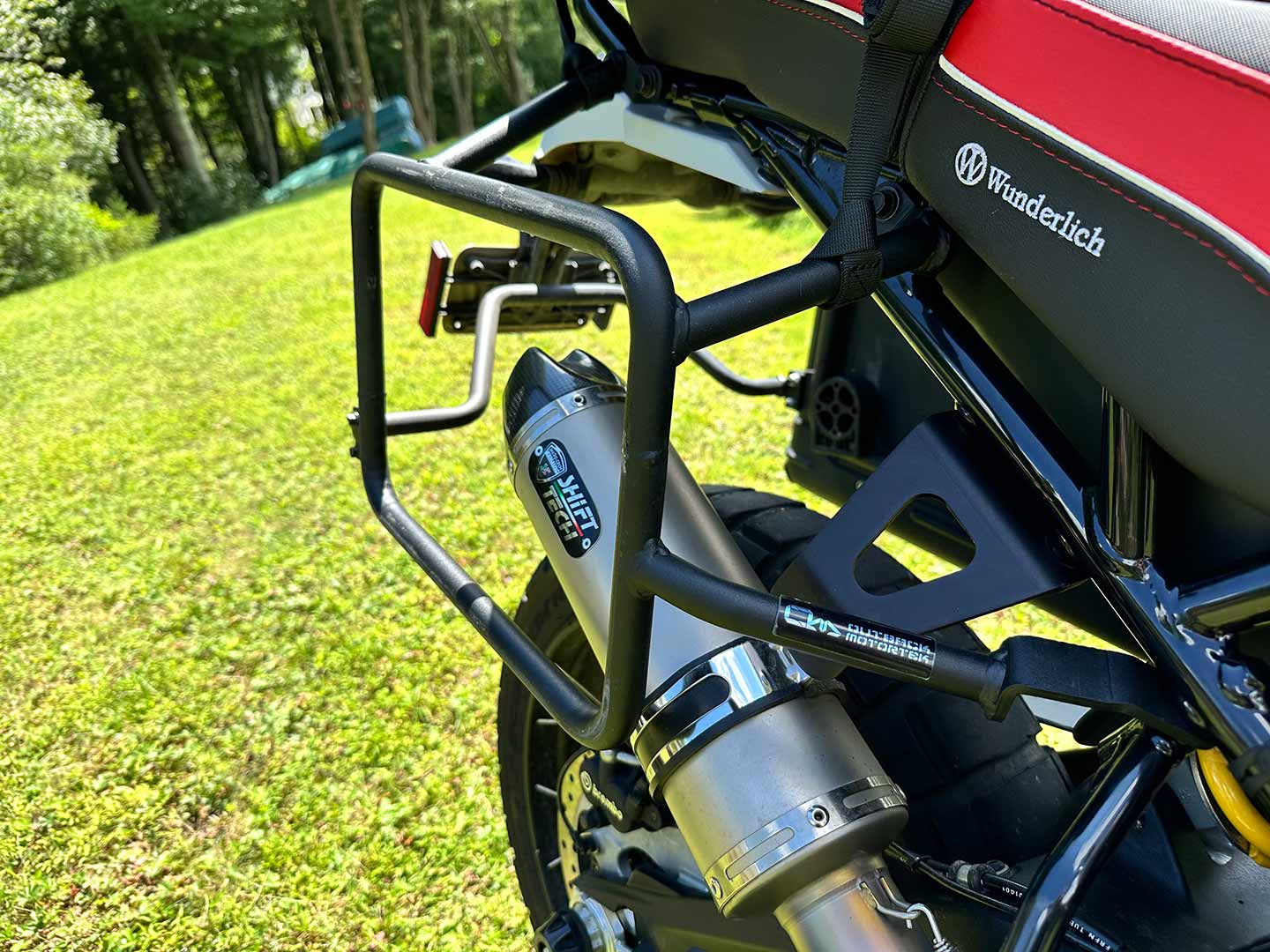

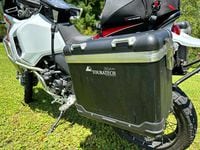
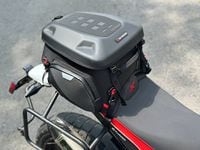
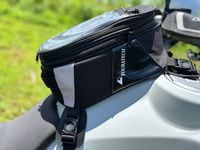


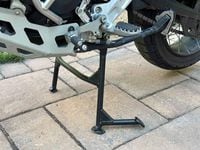
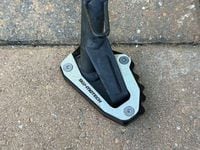
/cloudfront-us-east-1.images.arcpublishing.com/octane/UWTN4NTIJFD25MPXBOVS4DFOXE.jpg)
/cloudfront-us-east-1.images.arcpublishing.com/octane/SIFOY54XMFGEHAUYNFUYVW7IZ4.jpg)
/cloudfront-us-east-1.images.arcpublishing.com/octane/HMC5X3JZHRASXGVCVNBJBWWGSI.jpg)
/cloudfront-us-east-1.images.arcpublishing.com/octane/UIWGXRZDM5HZXJOWXET2DZIWJE.jpg)
/cloudfront-us-east-1.images.arcpublishing.com/octane/QSS5DZ6SKJEU3AKE4KDAWYBEFY.jpg)
/cloudfront-us-east-1.images.arcpublishing.com/octane/SMCEQCLWRVEFTJJES6TAHB3OOQ.jpg)
/cloudfront-us-east-1.images.arcpublishing.com/octane/JCACIDCAC5FUNPTXO2BOUHGGII.jpg)
/cloudfront-us-east-1.images.arcpublishing.com/octane/DC7ZGILA2BCJXHZIUNYGV7JSEA.jpg)
/cloudfront-us-east-1.images.arcpublishing.com/octane/EWJEZUGWEZGABDEQWB64WL46GQ.jpg)
/cloudfront-us-east-1.images.arcpublishing.com/octane/5NHBMRMSFVD5JAPFNMBMNPGXQE.jpg)
/cloudfront-us-east-1.images.arcpublishing.com/octane/WHE43SCPLJBRNANAJAGXHOAIEU.jpg)
/cloudfront-us-east-1.images.arcpublishing.com/octane/6R56AQAW6NDE7BBIJ3SMCOOY5A.jpg)
/cloudfront-us-east-1.images.arcpublishing.com/octane/JMQTUE2FKZFURJTJXDMM4V47AQ.jpg)
/cloudfront-us-east-1.images.arcpublishing.com/octane/P2QYJDMQNVEANMQFXHNB3OVFKQ.jpg)
/cloudfront-us-east-1.images.arcpublishing.com/octane/VNKGXM4AA5BPRGERJOPV6GADAQ.jpg)
/cloudfront-us-east-1.images.arcpublishing.com/octane/2WS4YIFLTNG25L25WP7ZFLSWJM.jpg)
/cloudfront-us-east-1.images.arcpublishing.com/octane/UXRS6ZVQZFC23FY2EDYNT5WMVA.jpg)
/cloudfront-us-east-1.images.arcpublishing.com/octane/7JETMCKNVRGDZIGB3JCITGLPUU.jpg)
/cloudfront-us-east-1.images.arcpublishing.com/octane/OZV6E2KNIJDVHGOKXQQ2AHKLHQ.jpg)
/cloudfront-us-east-1.images.arcpublishing.com/octane/XSKMIBFZIZDN7JC6P7SMNMD3QA.jpg)
/cloudfront-us-east-1.images.arcpublishing.com/octane/ITVHWHVQ75BQBHACERYDJLPLHE.jpg)
/cloudfront-us-east-1.images.arcpublishing.com/octane/M3QRBSQ4VFEVPKYTTM3OETVFBU.jpg)
/cloudfront-us-east-1.images.arcpublishing.com/octane/H3EMT5NJ5BDZPBBH27SW3ADQH4.jpg)
/cloudfront-us-east-1.images.arcpublishing.com/octane/XTROSHDZFJB5DIJYU2VF2REFIU.jpg)